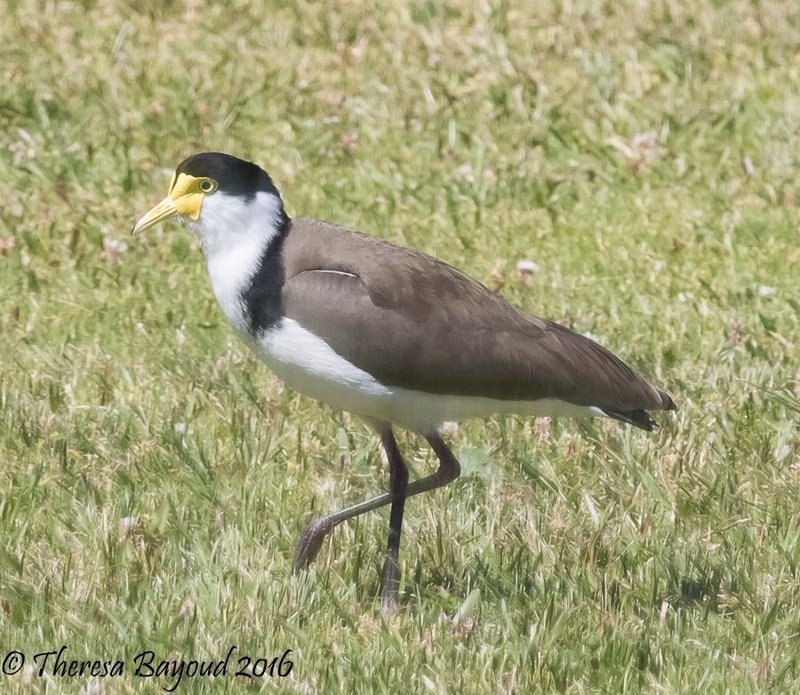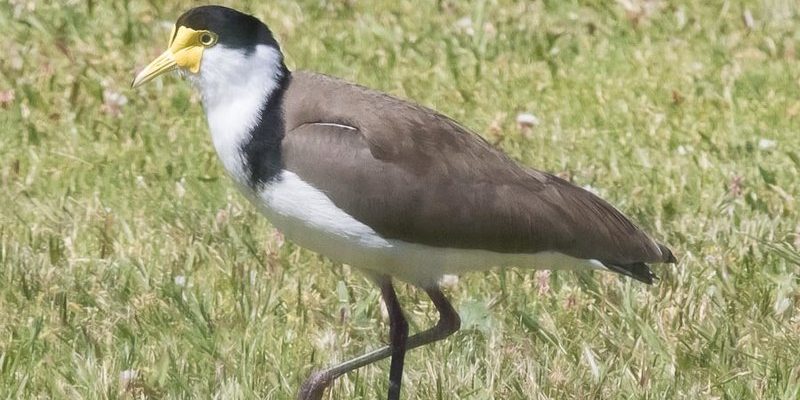
Imagine a bird that looks like it’s wearing a fancy tuxedo, strutting around the fields and wetlands. That’s the lapwing for you! These distinctive shorebirds, known for their striking appearance and captivating behaviors, are much more than just a pretty face. Lapwings are fascinating creatures that play a significant role in their ecosystems, making them worth knowing about.
With their unique crest, vibrant colors, and crisp calls, lapwings have captivated birdwatchers and nature enthusiasts alike. You might be wondering where they live, what they eat, and the story of their rise and fall. In this article, we’ll dive into the world of lapwings, exploring everything from their physical traits to their habitats and behaviors.
Physical Characteristics of Lapwings
Lapwings are easily recognizable due to their stylish plumage. Typically, they boast a mix of whites, blacks, and browns, with some species showing hints of iridescent colors. Their most distinguishing feature is the prominent crest on their heads, which gives them a regal appearance. This crest isn’t just for looks—it can also play a role in communication and mating displays.
In terms of size, a lapwing usually measures about 30 to 35 centimeters long. Their wingspan can reach up to 75 centimeters, which allows them to soar gracefully in the air. The body shape of a lapwing is somewhat stocky, with strong legs that provide excellent mobility on the ground and a powerful flight. Their long, pointed wings enable quick take-offs, helping them evade predators.
Their eyes are another striking feature. Typically, lapwings have large, bright eyes that contribute to their remarkable vision. This is essential for spotting food on the ground or detecting predators. Overall, the physical attributes of lapwings not only make them a sight to behold but also serve functional purposes that help them thrive in their environments.
Habitat and Distribution
Lapwings are adaptable birds that can be found in various habitats, predominantly across open fields, wetlands, and agricultural areas. They prefer regions with short grass, which makes it easier for them to forage for food. You’ll often find them in meadows, pastures, and even on the edges of lakes and rivers. Their ability to thrive in croplands makes them a common sight in agricultural regions.
These birds are primarily found in Europe, Asia, and parts of Africa. During migration, some species travel long distances to find suitable breeding grounds. They are known to be faithful to their nesting sites, returning to the same location year after year. However, habitat loss due to urban development and intensive agriculture poses a significant threat to their populations.
Interestingly, lapwings have a strong connection to their environment. They often act as bioindicators, which means their presence or absence can signal the health of an ecosystem. By monitoring lapwing populations, conservationists can gain valuable insights into environmental changes and take necessary actions to protect their habitats.
Diet and Feeding Habits
When it comes to food, lapwings have a varied diet that reflects their adaptability. They are omnivores, feeding on insects, worms, and small crustaceans. In agricultural areas, they often eat seeds and grains, which can sometimes bring them into conflict with farmers. You might see them foraging on the ground, using their strong beaks to dig up delicious treats hidden below the surface.
Lapwings are known for their foraging techniques, which can be quite entertaining to watch. They often stroll along the ground, pecking at the soil in search of food. At times, they’ll even use a technique called “broken wing display” to distract predators or potential threats away from their nest. This behavior not only protects their young but also adds to their charm as curious and clever birds.
Additionally, lapwings have keen eyesight that allows them to spot food from a distance. They can quickly adapt their feeding strategies based on the availability of resources, making them resilient in changing environments. Overall, their diet plays a crucial role in maintaining the balance of their ecosystems by controlling insect populations and facilitating seed dispersal.
Breeding and Nesting Behavior
Now let’s talk about love! Lapwings are known for their elaborate courtship displays. Males often perform aerial acrobatics, flying high and then diving down while calling out to attract a mate. The sight of a male lapwing performing these aerial dances is truly a spectacle, and it’s a key part of their reproductive ritual. Once a pair forms, they become quite devoted to each other.
When it comes time to breed, lapwings typically nest on the ground in open areas. The nests are simple, usually just a shallow depression lined with grass and feathers. This strategy helps them blend into their surroundings—an essential feature for avoiding predators. The female usually lays about three to four eggs, which both parents help incubate.
After around 28 days, the eggs hatch, producing adorable, downy chicks. These young birds are precocial, meaning they can walk and feed themselves shortly after hatching. However, they still rely on their parents for protection and guidance as they learn to navigate their world. The family unit remains strong, with both parents actively involved in raising their young until they can fend for themselves.
Conservation Status
Regrettably, the lapwing population has been declining in recent years. Factors such as habitat destruction, agricultural intensification, and climate change are significant threats to their survival. Many lapwing species are now listed as vulnerable or endangered, creating a pressing need for conservation efforts. Protecting their natural habitats is vital for ensuring the future of these fascinating birds.
Organizations and conservationists are actively working to create awareness about the challenges faced by lapwings. Establishing protected areas, promoting sustainable agricultural practices, and restoring wetlands are some of the key measures being undertaken. The goal is to create environments that are favorable for lapwing nesting and feeding, while also supporting other wildlife.
Community involvement plays a critical role in conservation efforts. Educating the public about the importance of lapwings and their ecosystems can foster a greater appreciation for wildlife. This can lead to grassroots movements that advocate for policies aimed at environmental sustainability. Together, we can help preserve the delicate balance that lapwings and other wildlife rely on for survival.
Interesting Facts About Lapwings
| Common Name: | Lapwing |
| Scientific Name: | Vanellus vanellus |
| Average Size: | 30-35 cm |
| Wingspan: | 75 cm |
| Diet: | Omnivorous (insects, seeds, grains) |
| Lifespan: | Up to 15 years |
| Breeding Season: | March to July |
| Habitat: | Grasslands, wetlands, agricultural fields |
FAQ
What do lapwings sound like?
Lapwings have a distinctive call that’s often described as a high-pitched “pee pee pee” sound. Their calls can vary based on the situation—whether they are warning of danger or calling to their mates. These sounds are an essential part of their communication, making them easily identifiable in nature.
Are lapwings migratory birds?
Yes, lapwings are migratory, although some populations may remain in their breeding areas year-round. Typically, they migrate to warmer regions during the winter months. The exact migration routes can vary by species, but they generally return to the same areas for nesting in spring.
How can I help protect lapwings?
There are several ways to contribute to the conservation of lapwings. Supporting wildlife conservation organizations, advocating for sustainable agricultural practices, and participating in local clean-up efforts can make a difference. Additionally, educating yourself and others about the importance of preserving natural habitats plays a crucial role.
Do lapwings mate for life?
Lapwings are known for forming strong pair bonds during the breeding season. While they may not necessarily mate for life, they often return to the same partners year after year. This loyalty enhances their chances of successfully raising young together.
What predators threaten lapwings?
Lapwings face threats from various predators, including foxes, crows, and birds of prey. They rely on their camouflaged nests and defensive behaviors to protect themselves and their young. However, habitat loss significantly increases their vulnerability to these predators.
Can lapwings be found in urban areas?
While lapwings typically prefer open fields and wetlands, they can sometimes adapt to urban environments. Parks and green spaces that mimic their natural habitats can attract lapwings, especially if there are food sources available. However, urbanization can pose challenges to their survival.
What colors do lapwings have?
Lapwings display a beautiful array of colors, including black, white, and brown. The males often have a more vibrant plumage than females, with a striking iridescent green hue on their wings. This stunning coloration is part of what makes them such a delight to observe in nature.
How do lapwings care for their young?
Both parents play an active role in nurturing their chicks. After the eggs hatch, they lead the young birds to foraging grounds and help protect them from threats. The parents remain with their brood for several weeks, teaching them essential survival skills before the chicks become independent.
What kind of environment do lapwings prefer?
Lapwings favor open, grassy areas like meadows, wetlands, and agricultural fields where they can easily find food and build nests. They thrive in environments that offer sufficient cover while allowing them to forage for insects and seeds. Such habitats are crucial for their breeding and survival.
What are the main threats to lapwing populations?
Main threats to lapwing populations include habitat destruction, changes in agricultural practices, and climate change. Urban development reduces their nesting areas, and intensive farming can lead to a decline in food sources. Conservation efforts focus on mitigating these impacts to ensure their survival.
Are lapwings social birds?
Lapwings are often seen in groups, especially outside the breeding season. They can be quite social, forming flocks that provide safety in numbers. However, they tend to be more solitary during the breeding season when they focus on nesting and raising their young.
Do lapwings have any unique behaviors?
Yes, lapwings exhibit fascinating behaviors, such as the “broken wing display.” When a predator approaches, a lapwing may feign injury to distract the threat away from its nest. This clever tactic not only protects their young but also showcases their resourcefulness in the face of danger.

